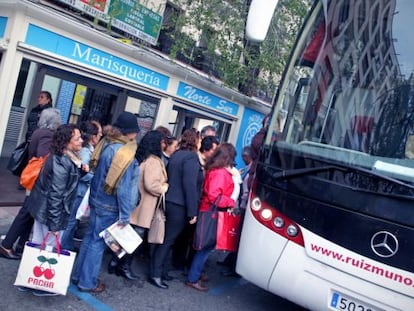The high cost (and growing appeal) of single living
The number of one-person households continues to grow globally, with implications for the economy and public policy

A third of European Union households are occupied by single people without any children. In the United States, where 38% of adults ages 25 to 54 are unpartnered according to a recent study by the Pew Research Center based on the US Census, one-person households make up 28% of the total. China is expecting the number of people living alone to reach 92 million by 2022. And in Spain, one in four homes have only one person living in them, and over half of these are under 65 years of age.
Singles are a growing demographic for whom everyday life can be more expensive, who have their own consumer dynamics and whose potential long-term impact on the economy is still a matter of debate.
There is a historical link between economics and personal relationships, says Jesús Sanz, who teaches social anthropology at Madrid’s Complutense University. Sanz explains that the rise of romantic love is tied to the sexual division of labor, and that the introduction of salaried work helps explain the growing numbers of single adults.
“Before salaried work came along, families not only played a reproductive role, they were also fundamental in the organization of subsistence,” he says. “Later, subsistence instead began to depend on individuals selling their labor, which created more autonomy from the domestic group.”
Rites of passage became less important. And singles stopped being viewed in such a negative light – in Spain, the old-fashioned word for singles is the pejorative solterones, compared to the neutral solteros. “It used to be that people who lived alone seemed to have a negative stigma attached to them, while these days they are increasingly associated to the idea of freedom,” said Ana López, first vice-dean of the Madrid Professional Association of Economists (CEMAD).
The price of living alone
But there is a price to living alone. “We could say that being single is expensive,” said Vicent Borràs, a researcher and lecturer in sociology at Barcelona’s Autonomous University. One of the clearest aspects is housing, which normally requires the biggest financial effort from households. “For a single person, access [to housing] is more complicated. Society, to a certain extent, is made for and favors partnered living.”
Juan Carlos Martínez Lázaro, who teaches at IE University, agrees. “Just think about taxation. Income tax is more geared towards families than towards people living alone.” And since living alone is expensive, those who can afford to do so are generally the more well-off, adds Borràs.
A recent study by the Pew Research Center suggests that in the US, marriage and cohabitation are associated with wage gains for childless women, but not for those with kids. In Spain, the long-term wage losses for women who have children are in the range of 28% per child, according to a study by the Bank of Spain. Men’s wages do not seem affected by the fact of having children, the same study showed.
“Singles play a more dynamic role in the job market because it’s easier for them to switch jobs and even emigrate than it is for married people, notes Joan Llull, a researcher at MOVE Foundation who teaches economics and Barcelona’s Autonomous University.
Consumer habits
Singles have become an increasingly desirable demographic for companies. According to consumer statistics, a household with several people living in it will consume more overall, but singles tend to consume more for themselves. “It’s clear that they consume a lot of leisure goods and services,” says Silvia Pinto, a researcher who teaches marketing at Madrid’s Autonomous University. “There is a very intense trend in society in general, but particularly reflected in singles, to try to spend more time enjoying what is viewed as a life of freedom.”
López underscores the relevances of singles in the 50-to-55 age category, close to the so-called silver economy. “The implications for the economy are clear. They are an important group with considerable capacity for savings.” This group tends to spend more on personal care, sports and better nutrition.
In the long run, some experts see economic dangers in the rise of singles. “For the point of view of the birth rate, it could pose a problem,” says López. “This trend is going to exacerbate the problems of the falling [birth] rate and the change in the population pyramid,” adds Martínez. “And let’s not forget that an older society becomes a less innovative, much more conservative society where public policy is aimed at satisfying the needs of the older population while ignoring many other policies aimed at the younger individuals.”
But Llull sees it differently. “It’s not clear to me that there could be a long-term problem beyond the fact of having to adjust policies to changing situations,” he said. “Structures and policies have to adapt to the changes in society. One example is pensions.”








































